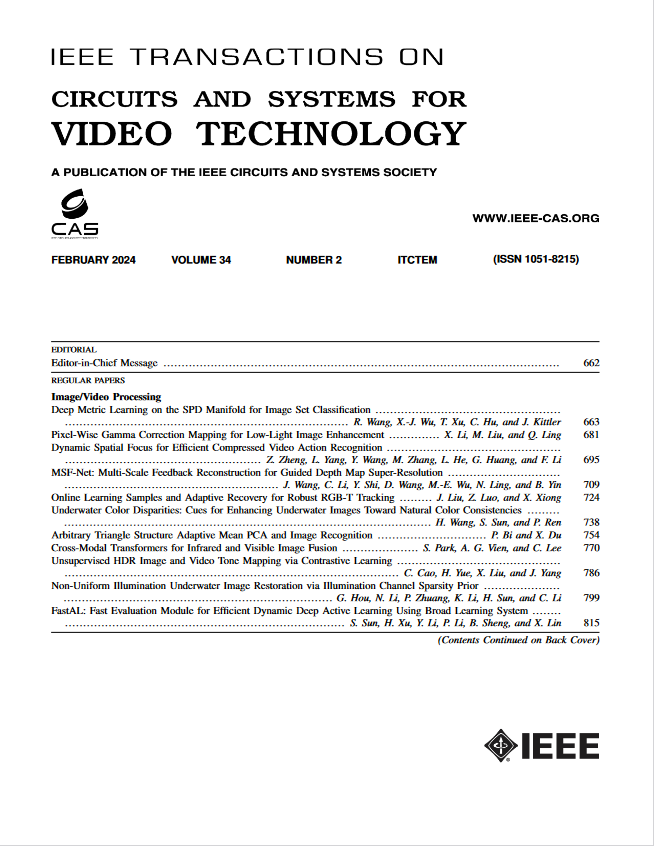CFAN-SDA: Coarse-Fine Aware Network With Static-Dynamic Adaptation for Facial Expression Recognition in Videos
IF 8.3
1区 工程技术
Q1 ENGINEERING, ELECTRICAL & ELECTRONIC
IEEE Transactions on Circuits and Systems for Video Technology
Pub Date : 2024-08-27
DOI:10.1109/TCSVT.2024.3450652
引用次数: 0
Abstract
Video-based facial expression recognition (FER) is a challenging task due to the dynamic emotional changes with variant frames in video sequences. This paper proposes a novel coarse-fine aware network with static-dynamic adaptation (CFAN-SDA) for in-the wild video-based FER. From coarse to fine, our method leverages cross-domain static FER database to boost video-based FER performance, and then explore hierarchical spatial-temporal feature learning. Specifically, different from existing methods, we design a static-dynamic adaptation learning to explore the knowledge transfer from labeled static images to unlabeled frames of video, which captures the features of coarse-grained emotion to find those important expression-related frames. Furthermore, we present hierarchical spatial-temporal transformers to better learn features of fine-grained expression, which consist of multi-view spatial transformer and frame-clip temporal transformer. The former captures multi-view spatial regions information from global to local, and the latter achieves cross-frame and cross-clip temporal interaction to select the key frame-level and clip-level multi-scale temporal information for fusing. Extensive experimental results on dynamic FER databases indicate that CFAN-SDA achieves superior performance compared to the state-of-the-art models.CFAN-SDA:具有静态-动态自适应功能的粗-细感知网络,用于视频中的面部表情识别
基于视频的面部表情识别是一项具有挑战性的任务,因为视频序列中不同帧的情绪会发生动态变化。本文提出了一种基于静态动态自适应的粗-精感知网络(CFAN-SDA)。从粗到细,我们的方法利用跨域静态FER数据库来提高基于视频的FER性能,然后探索分层的时空特征学习。具体而言,与现有方法不同的是,我们设计了一种静态-动态自适应学习方法来探索从标记的静态图像到未标记的视频帧的知识迁移,该方法捕捉粗粒度情感的特征,找到与表情相关的重要帧。此外,为了更好地学习细粒度表达式的特征,我们提出了分层时空变换,包括多视图空间变换和帧夹时间变换。前者捕获从全局到局部的多视图空间区域信息,后者实现跨帧和跨剪辑的时间交互,选择关键帧级和剪辑级的多尺度时间信息进行融合。在动态FER数据库上的大量实验结果表明,与最先进的模型相比,CFAN-SDA具有更好的性能。
本文章由计算机程序翻译,如有差异,请以英文原文为准。
求助全文
约1分钟内获得全文
求助全文
来源期刊
CiteScore
13.80
自引率
27.40%
发文量
660
审稿时长
5 months
期刊介绍:
The IEEE Transactions on Circuits and Systems for Video Technology (TCSVT) is dedicated to covering all aspects of video technologies from a circuits and systems perspective. We encourage submissions of general, theoretical, and application-oriented papers related to image and video acquisition, representation, presentation, and display. Additionally, we welcome contributions in areas such as processing, filtering, and transforms; analysis and synthesis; learning and understanding; compression, transmission, communication, and networking; as well as storage, retrieval, indexing, and search. Furthermore, papers focusing on hardware and software design and implementation are highly valued. Join us in advancing the field of video technology through innovative research and insights.

 求助内容:
求助内容: 应助结果提醒方式:
应助结果提醒方式:


